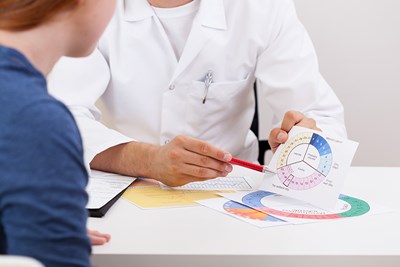Healthy women are expected to have their period once a month, beginning in their early teen years and spanning almost four decades into middle age. But, surprisingly, many women do not know everything they need to know about their periods. Part of the reason is because a woman’s period is regarded as a taboo topic and, so, sometimes it’s understood only for the emotional changes it can cause, and less is known about periods as a biological function. Here are 10 terms you should know when it comes to periods.
- Menstruation: Another term for “period”. When the lining of the uterus sheds, menstrual blood flows from the uterus and discharges through the vagina. Menstruation begins in young women around the age of 14 and will continue monthly until menopause.
- Menstrual cycle: The change that happens in the uterus and ovaries, making pregnancy possible. In other words, the menstrual cycle prepares the uterus for pregnancy. During the cycle, the lining of the uterus thickens and an egg is grown. Around day 14 in the cycle, the egg is released from an ovary. The thickened lining of the uterus will provide nutrients to an implanted embryo. However, if pregnancy does not occur during the cycle then the body sheds the uterus lining in menstruation.
- Endometrium: The lining of the uterus that grows a thick tissue layer during the menstrual cycle. The endometrium creates an optimal environment for an embryo but is shed during menstruation if pregnancy does not take place.
- Ovulation: The release of an egg from the ovaries. Ovulation occurs once every menstrual cycle and happens 12 to 16 days before your next period.
- Menarche: The very first menstrual bleeding in females. Menarche is often seen as the main event of puberty for girls. Menarche is experienced at a different age for everyone, but the estimated average age worldwide is 14. Menarche, however, can occur as early as 8 years of age.
- Premenstrual syndrome (PMS): The physical and emotional changes that can occur one to two weeks before menstruation. Symptoms vary depending on the person but can include acne, sensitive breasts, bloating, feeling tired and irritable, and mood swing.
- Dysmenorrhea: More commonly known as menstrual cramps, dysmenorrhea can occur before or during menstruation. There are two types of dysmenorrhea: primary and secondary. Primary dysmenorrhea is more common condition. Cramps begin about a year or two after menarche. Pain is felt in the lower abdomen or back and can be mild to severe. Secondary dysmenorrhea is when a disorder in the reproductive organs causes the pain. These cramps begin earlier and last longer than primary dysmenorrhea.
- Amenorrhea: A lack of menstruation. If a woman misses 3 periods in a row or is older than 15 and has not menstruated, she has amenorrhea. The most common cause of amenorrhea is pregnancy, but other common causes include problems with the reproductive organs that aid in the regulation of hormone levels. Amenorrhea can sometimes be treated, depending on the cause.
- Toxic shock syndrome (TSS): A sometime fatal condition that is caused by a bacterial toxin. Symptoms occur suddenly and include a high fever, Vomiting, diarrhea, lightheadedness, and a drop in blood pressure. TSS is known to affect menstruating women especially if they use tampons. Therefore, tampons need to be changed regularly, because they support the rapid growth of bacteria.
- Menopause: Menopause is believed to start 12 months after the last menstrual period in women between the ages of 40 and 50. The process ends fertility and menstruation because of the natural decline in reproductive hormones. Menopause can cause hot flashes, mood swings, sleep disturbances, low energy, and anxiety.




